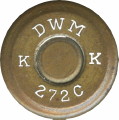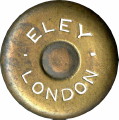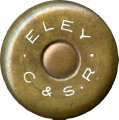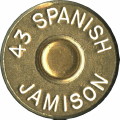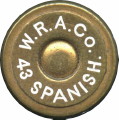The rolling block action was developed during the American Civil War by gunsmith Leonard M. Geiger in which the shooter “rolled” the breechblock backward with the thumb and inserted a cartridge in the breech, before the block “rolled” forward and the interlocking hammer cocked in one fluid motion. His patent was taken over by E. Remington & Sons and they used one of their chief engineers, Joseph Rider to further refine the action, the most important being the strengthening of the breechblock by machining it out of a solid billet of steel. This 1866 patent saved Remington from bankruptcy and during the 1867 Paris Exposition, the High Commission on Firearms called the Remington rolling block “the finest rifle in the world” and awarded it the silver medal (the highest award) for mechanical excellence.

The first cartridge was developed by Remington in 1869 and was a .43 calibre bottlenecked cartridge consisting of a brass tube with folding head construction for a separate Boxer-type primer pocket (see image CFR225 in Hoyem 2 p. 236). This cartridge was abandoned in favour of a drawn brass case with Berdan primer. Spain began in 1868 – 1869 to search for a breech loading rifle and the first Remington rolling block rifles were delivered to the Spanish in Cuba in 1869. Apart from the Spanish central government, various cities and departments throughout Spain placed contracts for what was known as the Model 71 rifle. Domestic production of the rolling-block was also done from 1869 or 1870 at the National Armoury at Oviedo. The Spanish however were not happy with the performance of the bottlenecked cartridge and in the beginning of the 1880s Lieutenant Colonel Luis Freire y Gongora and Captain Jose Brull y Seoane redesigned the cartridge from bottle-necked to straight case which became the 11.4 Spanish Reformado.
Thombs David A, and Barrett Stephen P. The internet and firearms research with reference to the .43 Spanish Remington Rolling-Block and its ammunition. The Journal of the Historical Breechloading Small Arms Association, Vol.4 No.4 p.14 – 23. London 2012.
